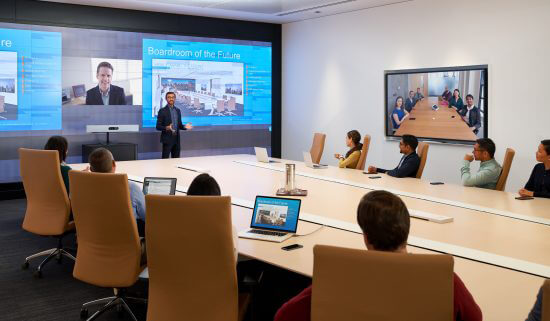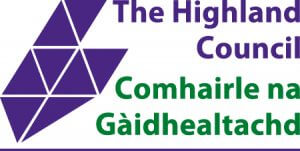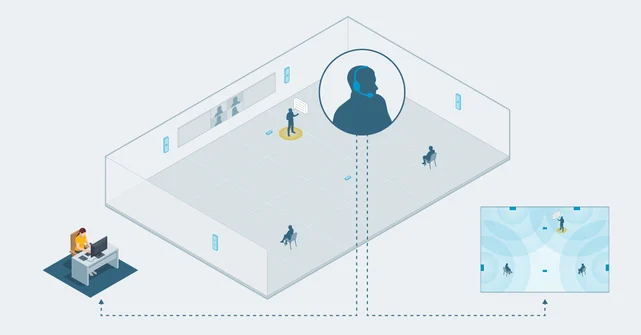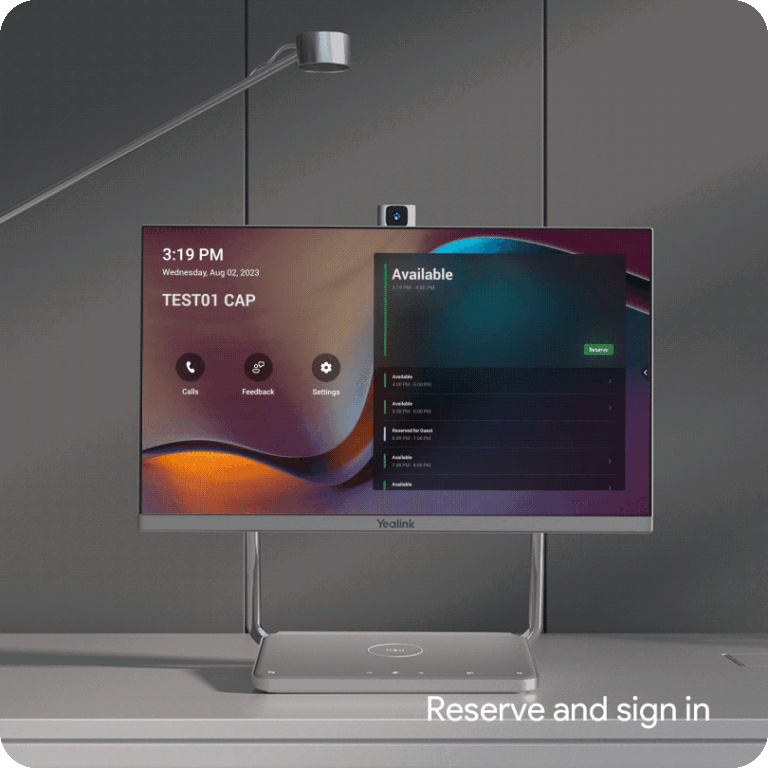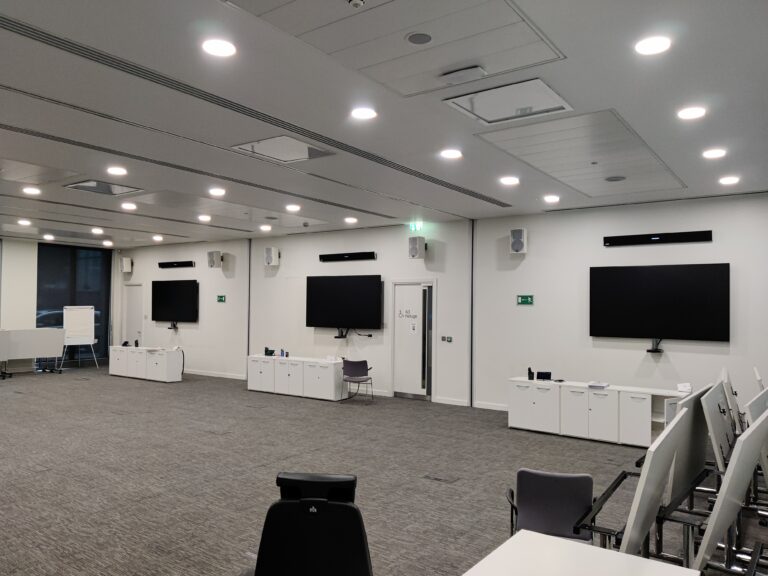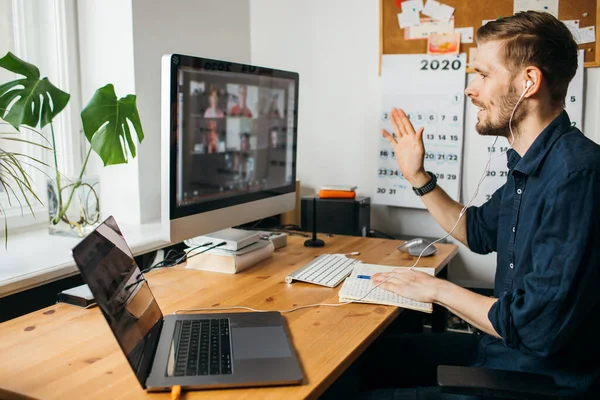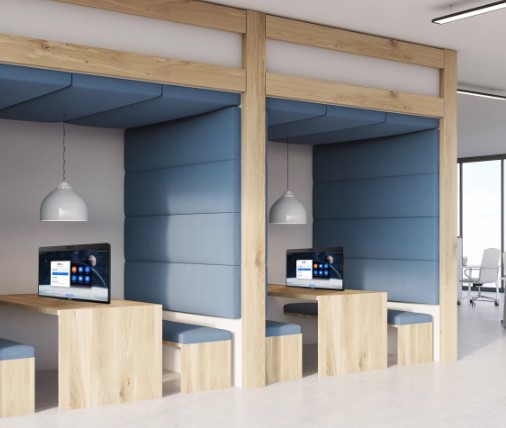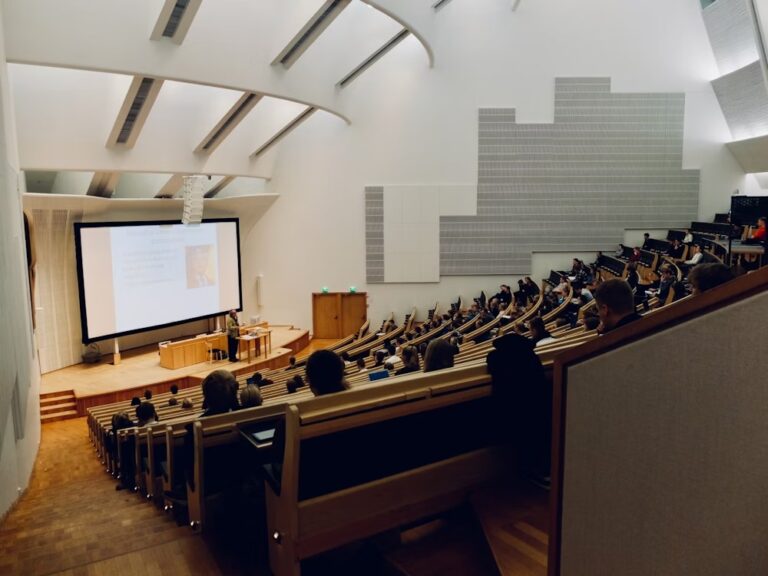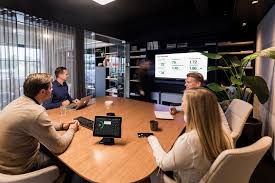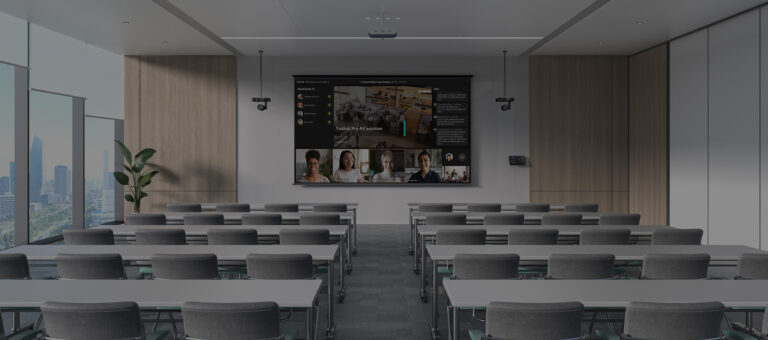The COVID-19 pandemic significantly altered the landscape of work, transforming how we view offices, meetings, and collaboration. The widespread adoption of remote work during the pandemic businesses are now navigating a transition into a hybrid work model. According to recent data, only 33% of employees have returned to the office. This is highlighting the need for innovative approaches to facilitate effective collaboration and engagement.
The Rise of the Hybrid Workspace
The pandemic forced organisations to swiftly adapt to remote work, revealing its viability and benefits. As employees have grown accustomed to the flexibility and work-life balance that remote work offered. Many companies have expressed a desire for a hybrid work model, combining both in-office and remote work.
The hybrid workspace aims to strike a balance between the benefits of in-person interactions and the flexibility of remote work. Work now extends beyond the confines of a physical office, embracing a more flexible and dynamic approach. This allows employees to choose when and where they work, enhancing productivity and employee satisfaction.
Redefining Meetings for a Hybrid Workforce
When shifting to a hybrid work model, a key action is to actively reconsider how meetings are conducted. Traditional meeting rooms, once bustling with activity, now face the challenge of accommodating remote participants seamlessly. To bridge this gap and ensure that all attendees whether in the office or at home, have a meaningful and immersive experience. Businesses are embracing innovative solutions.
This transformation is pivotal in maintaining cohesive teams, fostering productivity, and nurturing a sense of belonging among employees.
- Technological Integration for Seamless Collaboration – Embracing a hybrid work model demands a harmonious blend of in-person and virtual collaboration.
- Hybrid-Friendly Meeting Room Designs – We are actively redesigning physical meeting spaces to effectively accommodate a hybrid audience.
- Enhanced Communication and Participation – In a hybrid work setting, communication and participation must be intentional and engaging.
- Empowering Remote Attendees – Empowering remote attendees involves incorporating technologies that offer them an enriched experience –
- Encouraging Hybrid Work Etiquette – Establishing clear guidelines and etiquettes for hybrid meetings is essential.
Immersive Meeting Rooms 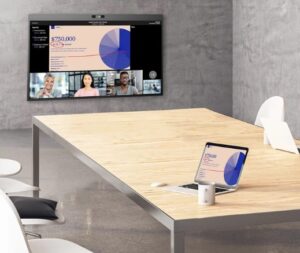
To create a sense of togetherness and inclusivity during meetings, businesses are investing in technologies. This enhances the immersive experience for remote participants. Integrating advanced audio-visual setups, 360-degree cameras, and high-quality microphones actively enhances meeting rooms, replicating the immersive experience of being present in the room.
These technologies allow remote employees to see, hear, and actively participate in discussions as if they were physically present. By providing an immersive experience, businesses are fostering better collaboration and ensuring that no one feels isolated.
- Advanced Audio-Visual Systems – One of the cornerstones of an immersive meeting room is a sophisticated but easy-to-use set of tools more advanced than available to desktop workers.
- 360-Degree AI Cameras for a Panoramic View – Integration of 360-degree AI camera as a companion to the front-of-room primary camera is a game-changer in immersive meeting experiences.
- High-Quality Microphones for Clear Audio – Crystal clear audio at high volume, is the single most important aspect of any meeting.
- Real-Time Interaction and Feedback – Expecting natural conversation and real-time interaction has been a norm in meeting rooms for decades, and this remains crucial for hybrid meetings as well.
- Integrated Communication Platforms – We expect seamless integration with 2-way collaborative tools and platforms to enhance the immersive experience. Despite the potential benefits, interactive touch panels are often poorly integrated, hindering their real impact.
The Future of Hybrid Work
David Shimell, MD of VideoCentric said “The hybrid workspace is a lasting trend. Recent research highlights that remote employees frequently experience feelings of isolation, inadequate training, and increased vulnerability due to reduced day-to-day contact with management staff and peers. But the downsides of traveling to and from the office and the impact on their new work: life balance means that businesses have to continue to adapt to prosper; after all we all know that employees are our most important resources and those that we have invested the most in, so losing them through dissatisfaction should not be an option”.
He added “Comfort in the office meeting room is not just about soft furnishings; they have better ones at home. Highlighting the Importance of Tech Comfort – We must not overlook the need for comfort with technology. It’s crucial to ensure ease-of-use, not only within MS Teams or Zoom rooms, but across all other presentation, BYOD, BYOM, and interactive resources that are set up”
He went on to say “Refined audio, superb video, acoustic treatment, booking of rooms remotely, selective hot-desking etc, are all considerations that need to be thought through and where we can help our customers get their journey for 2024 right first time. AI will continue to adjust our strategies, to optimise productivity, collaboration, and employee satisfaction but creating a sense of unity and inclusion among employees, regardless of their physical presence, will remain a top priority”.
Why don’t you have a look at some installation we have cone recently – VideoCentric Installations
Microsoft Teams new Hybrid Workspaces – Signature Rooms
Zoom Hybrid Work Spaces – Zoom Rooms

